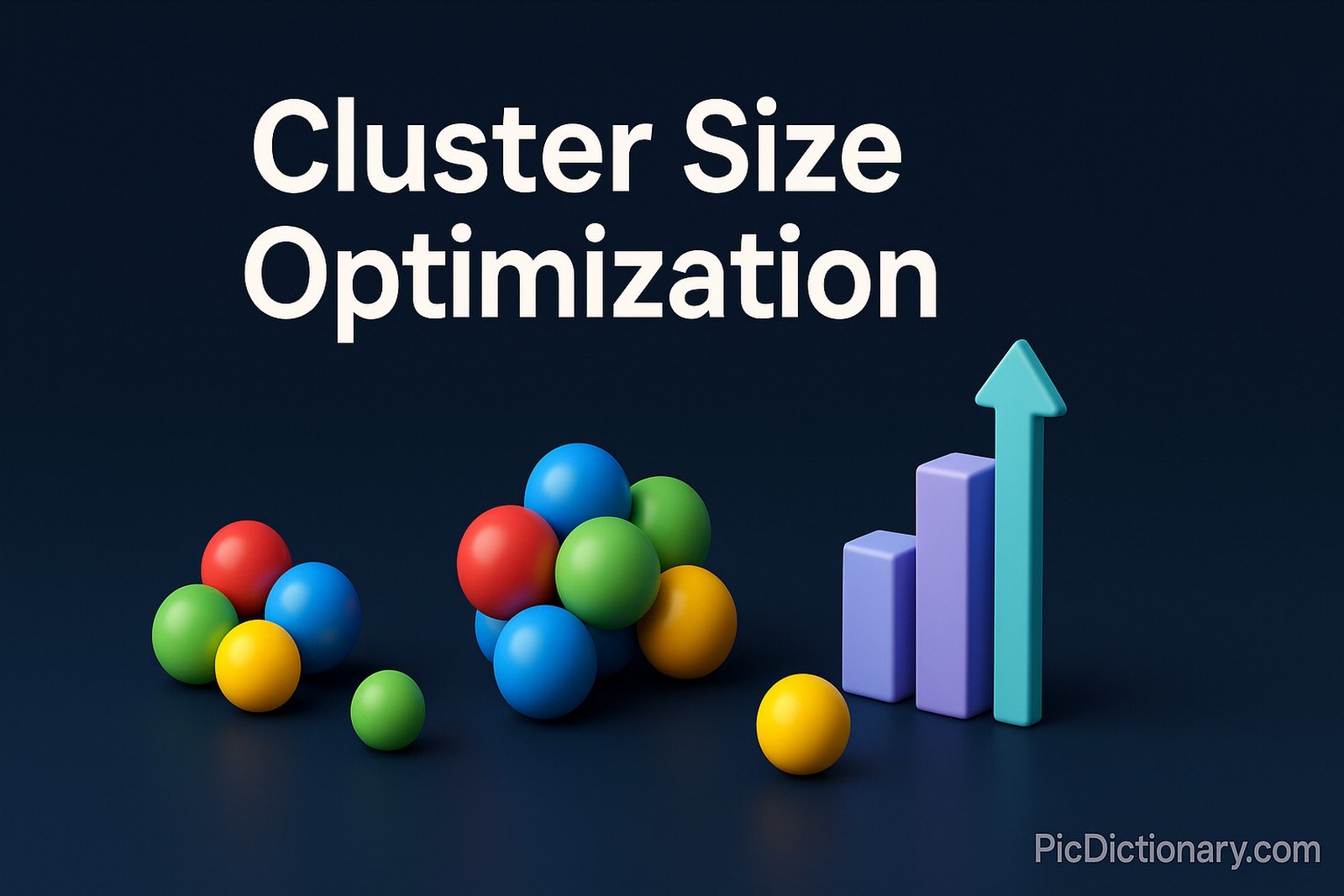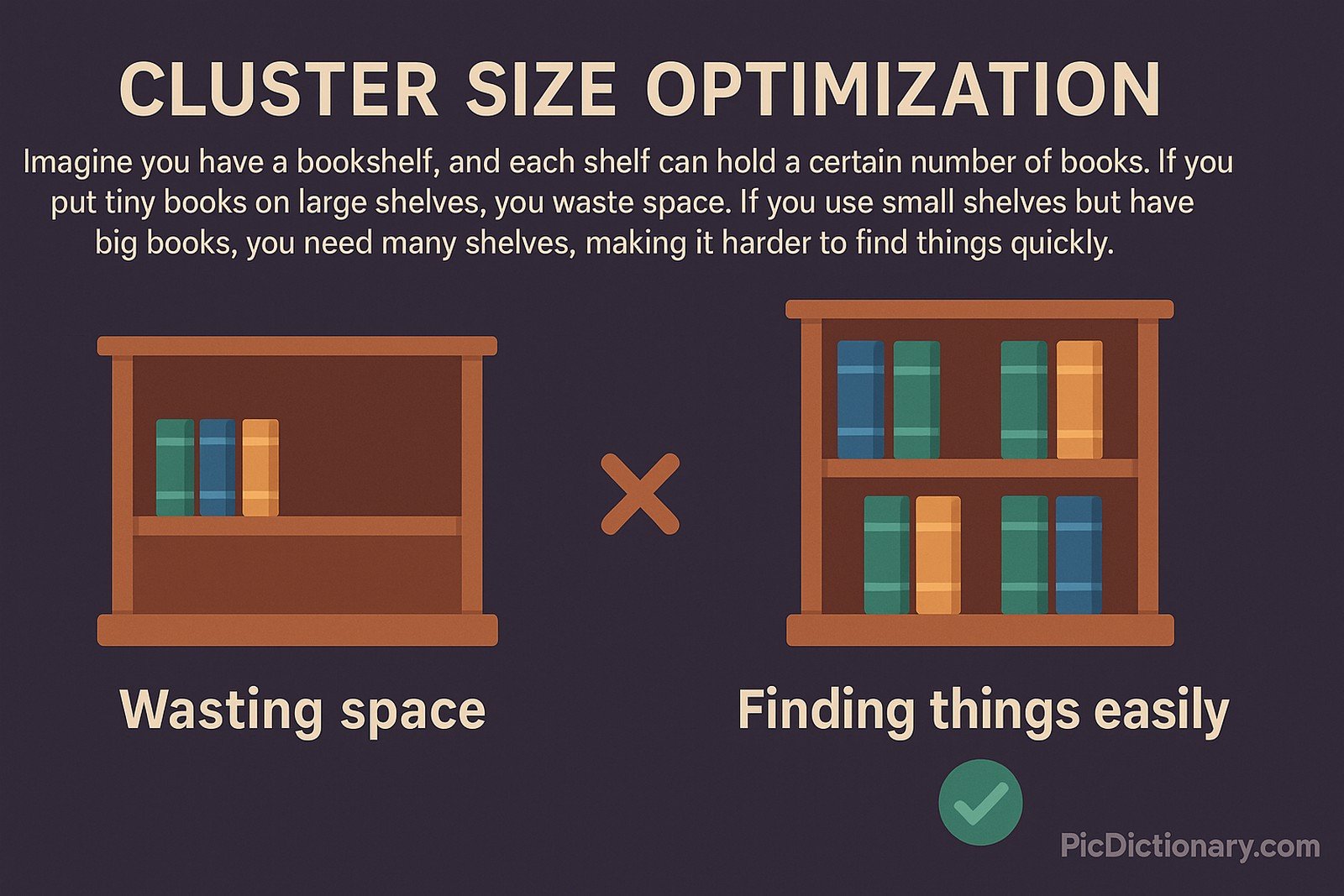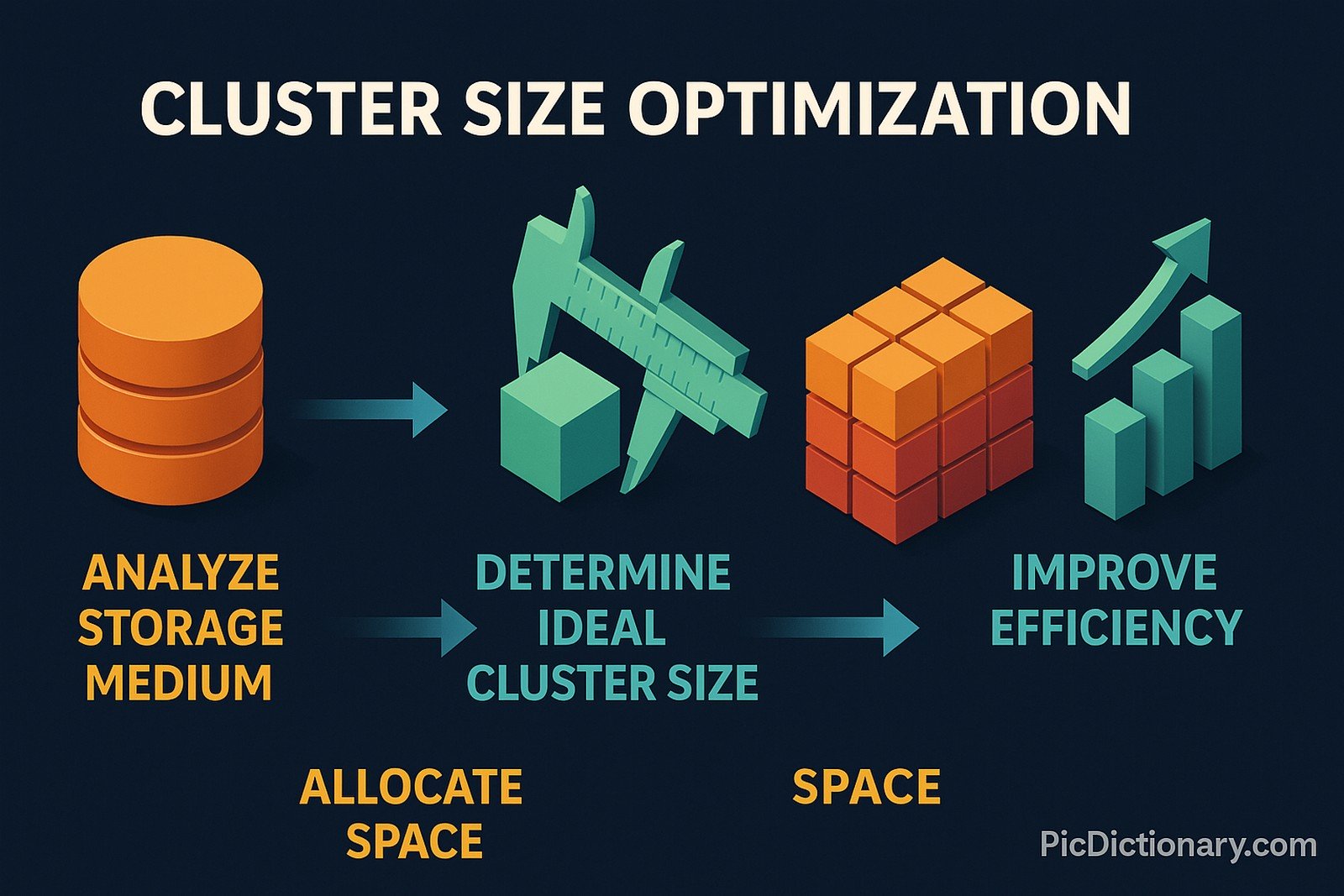Cluster Size Optimization

Quick Navigation:
- Cluster Size Optimization Definition
- Cluster Size Optimization Explained Easy
- Cluster Size Optimization Origin
- Cluster Size Optimization Etymology
- Cluster Size Optimization Usage Trends
- Cluster Size Optimization Usage
- Cluster Size Optimization Examples in Context
- Cluster Size Optimization FAQ
- Cluster Size Optimization Related Words
Cluster Size Optimization Definition
Cluster Size Optimization refers to the process of determining the ideal allocation unit size on a storage medium to enhance performance, minimize wasted space, and optimize read/write efficiency. This concept is crucial in filesystems like NTFS, FAT32, and ext4, where selecting the appropriate cluster size can significantly impact data storage efficiency and system performance.
Cluster Size Optimization Explained Easy
Imagine you have a bookshelf, and each shelf can hold a certain number of books. If you put tiny books on large shelves, you waste space. If you use small shelves but have big books, you need many shelves, making it harder to find things quickly. Cluster Size Optimization is about choosing the right shelf size for your books so that you don’t waste space and can find things easily.
Cluster Size Optimization Origin
The concept of cluster size optimization emerged with early computer file systems when storage space was scarce, and efficient data organization was critical. Over time, as storage capacities increased, the need to optimize cluster size remained relevant to balance speed and space utilization.
Cluster Size Optimization Etymology
The term originates from computing terminology, where "cluster" refers to a group of sectors on a storage device that act as a single unit, and "optimization" refers to improving efficiency in space allocation and access speed.
Cluster Size Optimization Usage Trends
As storage devices have grown in size, cluster size optimization has become increasingly important in enterprise environments, where massive datasets must be stored efficiently. Modern SSDs and high-speed storage solutions rely on finely tuned cluster sizes to maintain fast data access and reduce unnecessary wear.
Cluster Size Optimization Usage
- Formal/Technical Tagging:
- Filesystem Management
- Data Storage
- Disk Optimization - Typical Collocations:
- "optimized cluster size"
- "filesystem cluster tuning"
- "cluster size efficiency"
- "NTFS allocation unit size"
Cluster Size Optimization Examples in Context
- A database administrator configures the optimal cluster size to improve database query speeds.
- Gamers optimize their SSD’s cluster size to reduce loading times for large game files.
- IT professionals adjust cluster sizes when formatting a hard drive to balance space and performance.
Cluster Size Optimization FAQ
- What is cluster size optimization?
It is the process of selecting the best allocation unit size on a filesystem for efficient storage use and performance. - Why does cluster size matter?
Choosing the wrong cluster size can waste storage space or slow down file access speeds. - What is the best cluster size for NTFS?
The ideal cluster size depends on the usage, but 4KB is common for general applications. - Does a larger cluster size improve speed?
For large files, a larger cluster size can improve read/write speeds but may waste space on smaller files. - How do I check my current cluster size?
You can use commands like `chkdsk` on Windows or `tune2fs` on Linux. - Can I change the cluster size of an existing drive?
Yes, but it usually requires reformatting, which deletes all data. - Is a smaller cluster size better for SSDs?
Generally, yes, as smaller clusters help reduce write amplification and increase lifespan. - How does cluster size affect fragmentation?
Smaller cluster sizes reduce wasted space but may increase fragmentation. - Does cluster size optimization affect gaming performance?
It can, as optimized cluster sizes help improve load times and asset retrieval speeds. - What happens if I use an incorrect cluster size?
It can lead to excessive storage waste, slow access speeds, or inefficient file handling.

Cluster Size Optimization Related Words
- Categories/Topics:
- Filesystem
- Disk Partitioning
- Data Storage Efficiency
Did you know?
In some cases, setting an incorrect cluster size can cause a system to miscalculate free space, leading to significant storage inefficiencies or even data corruption in extreme cases.
PicDictionary.com is an online dictionary in pictures. If you have questions or suggestions, please reach out to us on WhatsApp or Twitter.Authors | Arjun Vishnu | @ArjunAndVishnu

I am Vishnu. I like AI, Linux, Single Board Computers, and Cloud Computing. I create the web & video content, and I also write for popular websites.
My younger brother, Arjun handles image & video editing. Together, we run a YouTube Channel that's focused on reviewing gadgets and explaining technology.



Comments powered by CComment